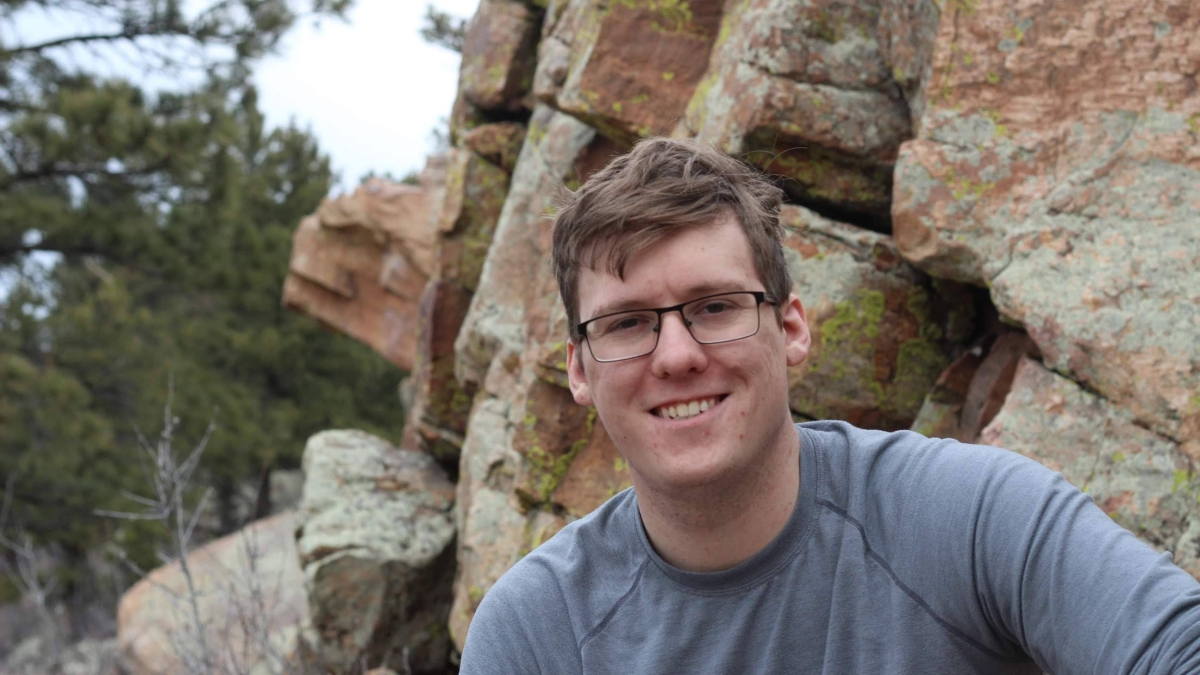ASU Online student and Starbucks partner aims to design sustainable urban cities

Editor's note: This story is part of a series of profiles of notable spring 2022 graduates.
Imagine a future sustainable city with modular buildings, vertical farming and local production of important goods all nearby. Work, grocery stores, restaurants and other common destinations are just a short walk or bike ride away.
This is the future Arizona State University graduate Conor Kennett hopes to build in his career.
“Cities like Detroit shrunk because they did not have a long-lasting sustainable industry to keep their economic growth going and so they suffered,” Kennett said. “I want to create something that will be long lasting while also being sustainable for the environment.”
Kennett, a first-generation student from Minneapolis, is graduating this spring with an online Bachelor of Science in urban planning from the College of Liberal Arts in Sciences. He’s also earned a minor in sustainability and a certificate in geographic information science.
Kennett was able to attend college thanks to the Starbucks College Achievement Plan, a first-of-its-kind partnership that provides qualifying Starbucks partners with 100% tuition coverage to earn an undergraduate degree through ASU Online.
“I chose ASU because Starbucks gave me a scholarship for it,” Kennett said. “Without that scholarship, I would have never gone to college. I am so glad I did though because ASU has been an amazing experience and the teachers and faculty have been incredible in my journey.”
Read on to hear more from Kennett about this ASU experience and advice for current students.
Question: What accomplishment are you most proud of as an ASU Online student?
Answer: I am super proud to be graduating with honors and having made the dean’s list three semesters considering for me school has always been a challenge. I was a C student in high school and never saw myself as someone who could even get B’s let alone A’s. I just needed to find the subjects that were interesting to me I guess!
Q: What was your “aha” moment when you realized you wanted to study the field you majored in?
A: I think when I started talking to a coworker about urban planning as he was attending ASU for the program it started to click for me a bit, but then after talking with someone at ASU about the program and what sort of career paths it could lead to is when it really started to sink in. I think city design is really interesting and all of the factors that go into it fascinate me. There are certainly some dream projects that I want to work on at some point if I can.
Q: What’s something you learned while at ASU — in the classroom or otherwise — that surprised you or changed your perspective?
A: I think taking classes that were unrelated directly to my field really brought me some perspective and one class, in particular, was about extreme weather. The class made us look at extreme weather events occurring around the world each week and I remember looking into major flooding that was happening in Iran. I didn’t think it flooded in Iran, but they have seasonal floods that are really destructive and that year they were particularly bad. It helped to alter my perspective in a way that everyone in the world is dealing with issues and we (the United States) can't think it's all about us.
Q: Which professor taught you the most important lesson while at ASU?
A: I think Professor Ronald Dorn was probably the most influential professor at ASU though honestly there were many. He really showed me that learning can be fun and taught me how to crave knowledge. Something about his candor and his passion for being an educator really changed me as a student. I do not think I would’ve completed my degree without his influence and I hope I can express that in person at some point because I want him to know how pivotal his role was in my education.
Q: What was your favorite spot for power studying?
A: I do all my homework and study at my desk in my apartment because secretly I am a hermit. It is my comfort zone and I filled my space with lots of nice stuff so I don’t like leaving it very often.
Q: What’s the best piece of advice you’d give to those still in school?
A: Find your passion and then work for it. The things you will be passionate about will not come to you easily and no one is born for it. You don’t decide to be a doctor on a whim, you work towards it with a fervor and unrivaled passion because you care about people. You don’t become a lawyer because it sounds cool, you choose that path because you care about justice and equality. Never give up on yourself and keep going because it will be worth it to finish that degree. This is the best investment you can make in life and it is worth it.
Written By Stephanie Morse, marketing content specialist, EdPlus at ASU
More Environment and sustainability

Rethinking Water West conference explores sustainable solutions
How do you secure a future with clean, affordable water for fast-growing populations in places that are contending with unending…
Meet the young students who designed an ocean-cleaning robot
A classroom in the middle of the Sonoran Desert might be the last place you’d expect to find ocean research — but that’s…

From ASU to the Amazon: Student bridges communities with solar canoe project
While Elizabeth Swanson Andi’s peers were lining up to collect their diplomas at the fall 2018 graduation ceremony at Arizona…

